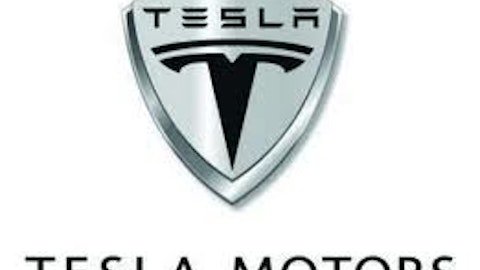
Bob Socia, president of GM China, noted “We have seen strong vehicle demand across China, particularly in the midsize, upper-medium, luxury and SUV segments.” He also mentioned that June demand was up 10.6% year over year from 236,207 units a year before. Socia projects that Chinese demand for General Motors Company (NYSE:GM) passenger cars and commercial vehicles will “remain robust through the end of the year.” He also expects China to remain the company’s largest market in the near-term future, even with the US auto market reviving.
GM is not the only American car manufacturer prospering in China. Rival Ford Motor Company (NYSE:F) set its own company record for the first half of the year, with sales for the company surging 47% year over year in June. Although all the final numbers are yet to be reported, it appears that General Motors Company (NYSE:GM) and Ford Motor Company (NYSE:F) both were positioned to outperform the overall Chinese market in the first half of the year. According to domestic industry sources, passenger car sales over the highlighted time period are expected to be up 14%, with year over year June growth topping only 10%.
Ford has been rapidly increasing foreign sales, but lags considerably behind GM in the crucial Chinese market. Ford Motor Company (NYSE:F) got off to an extremely late start in the market and ever since has been playing a game of catch up. However, progress is being made, with several new expansion plans being announced, including a $500 million engine plant in Chongqing. In the first half of 2013, Ford sold 407,721 vehicles, a record for the company.
Both General Motors Company (NYSE:GM) and Ford Motor Company (NYSE:F) possess ambitious decade goals for the Chinese market. Ford expects 40% of the company’s sales being derived from China by the end of the decade while GM has set a target of delivering more than 5 million vehicles a year in China before the end of the decade.
However, it hasn’t been all roses for automotive manufacturers in China. Most notably, Toyota Motor Corporation (ADR) (NYSE:TM) has suffered in this market. Sales of Japanese cars in China plunged late last year after tensions escalated over ownership of uninhabited islands known as Diaoyu, in Chinese, and Senkaku, in Japanese. As a result, Chinese consumer sentiment turned sharply against Japanese brands. On April 21, the company announced that it does not expect sales to recover until autumn, after the company displays 52 models at this year’s Shanghai Auto Show. As a result of this setback, Toyota was forced to postpone attempting to make China its third million-vehicle market. However, due to the overall growth in the market, Toyota Motor Corporation (ADR) (NYSE:TM) still anticipates deliveries rising about 7% to 900,000 vehicles in 2013.
Looking Towards the Future
Presently, China’s automotive market is growing at an accelerated pace, and with projections foreseeing this growth sustained into the future, automotive manufactures are placing a greater importance on China with each passing year. 7 years ago, only 5 million vehicles were sold in China–in 2009, China surpassed the U.S. as the world’s leading auto market with 13.6 million vehicles sold. A projection by JD Power Automotive Forecasting foresees 35 million vehicles sold in China by 2020, demonstrating the impressive growth of the country’s market.

How to Position
Thus, given the present automotive conditions in China, which, if any, of the major three global car manufacturers present attractive overall investments?
General Motors Company (NYSE:GM)’s top line is predicted to sustain 5%-7.5% growth annually through 2015, with revenue increasing from 2012’s $152.25 billion to $181.61 billion by 2015. The bottom line for the company is expected to grow in the 15%-17.5% range annually through 2015, with net income rising from 2012’s $4.86 billion to 2015’s anticipated $7.88 billion. The company presently holds a price to earnings ratio of 12.54, and does not pay out a dividend. Overall, GM earns 5 out of 5 stars, and is a tremendously strong company perfectly positioned to prosper into the future.
Ford Motor Company (NYSE:F)’s top line is projected to rise from 2012’s $126.60 billion to 2015’s expected $153.66 billion, representing consistent 6%-7% year over year growth. Net income for the company is anticipated to grow from $5.71 billion in 2012 to the anticipated $7.97 billion by 2015, representing 10-12.5% growth annually. Presently, the company holds a price to earnings ratio of 11.59, and pays out a dividend yield of 2.34%. In total, Ford earns 4 out of 5 stars, and is a strong investment with overall strong fundamentals.
Toyota Motor Corporation (ADR) (NYSE:TM)’s top line growth is predicted to remain in the 7.5%-10% range annually through 2015, with revenue increasing from 2013’s 61.09 trillion ¥ to 108.53 trillion ¥ by 2016. The bottom line for the company is expected to grow in the 25%-30% range annually through 2015, with net income rising from 2013’s 0.96 billion ¥ to 2016’s anticipated 2.06 billion ¥. The company presently holds a price to earnings ratio of 21.18, and pays out a dividend yielding 1.54%. Overall, Toyota earns 4 out of 5 stars, and has strong fundamentals–however, it is restricted from earning 5 out of 5 stars by its high valuation.
The Foolish Bottom Line
The Chinese automotive market is the largest in the world, and is growing at a very fast pace. The sheer importance of China to the automotive industry was reaffirmed when China became General Motors Company (NYSE:GM)’s largest market early this year. With 35 million vehicles being projected to be sold in 2020, only those companies strategically positioned in China will reap the benefits of the country’s explosive growth. Presently, GM appears to be established and prospering in China, Ford Motor Company (NYSE:F) is playing a desperate game of catch up, and Toyota Motor Corporation (ADR) (NYSE:TM) is suffering from heavy anti-Japanese sentiment.
The article What Does This Monumental Milestone Mean For the Auto Industry? originally appeared on Fool.com and is written by Ryan Guenette.
Ryan Guenette has no position in any stocks mentioned. The Motley Fool recommends Ford and General Motors Company (NYSE:GM). The Motley Fool owns shares of Ford Motor Company (NYSE:F). Ryan is a member of The Motley Fool Blog Network — entries represent the personal opinion of the blogger and are not formally edited.
Copyright © 1995 – 2013 The Motley Fool, LLC. All rights reserved. The Motley Fool has a disclosure policy.



